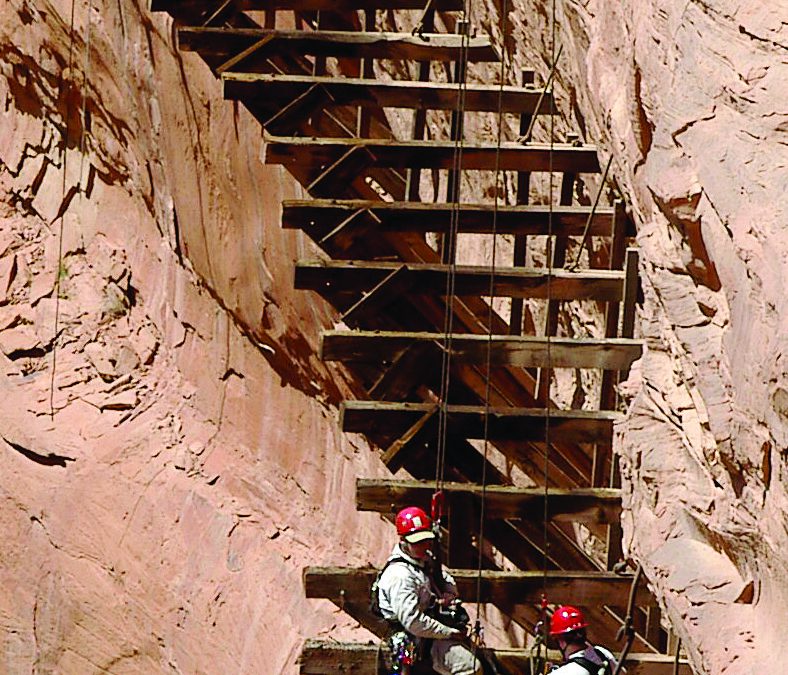“You look up the Dolores River and see three football lengths of the flume—it’s pretty impressive. It makes you think of the lost art and ingenuity of creating something like that.” – Chris Miller
It may be the romance of the gold rush or else the feat of engineering alone, but Colorado’s Hanging Flume draws up to 3,000 people each year to marvel the cliff-hanging spectacle in western Colorado. In 2006, the wooden flume, situated precariously 100 feet above the Dolores River, reached the World Monuments Watch List of the top 100 most imperiled cultural heritage sites.
Built between 1889 and 1891, the Hanging Flume funneled up to 8 million gallons of water per day to the Bancroft Claim in the historical town of Uravan. Many flumes were built at the time to transport water to mining sites and pressurize it by forcing it through a hose. The force of the water cut into the hillside and washed debris into a sluice box where gold was filtered out. The Hanging Flume is not only the most intact of the remaining flumes in Colorado but the longest—extending for almost 10 miles—and most of that hangs from the side of a cliff.
“You look up the Dolores River and see three football lengths of the flume—it’s pretty impressive. It makes you think of the lost art and ingenuity of creating something like that,” says Chris Miller, executive director of the Western Colorado Interpretive Association. Miller’s organization reconstructed 48 feet of the flume in April 2012, making it the only hanging flume preserved for public education.


 Print
Print